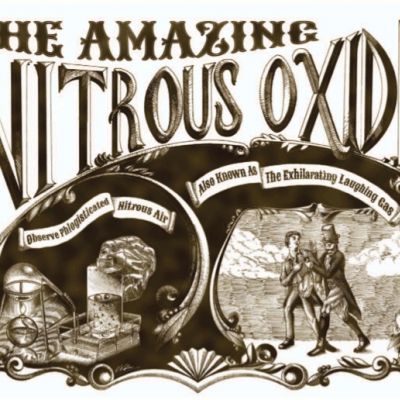Anaesthesia
Anaesthetics are one of the few drugs that were used in humans, before the product was extensively tested on animals to understand how it functions and the doses to use. Probably some sort of sedative product existed long before humans could even talk. Attempts to alleviate the pain of disease, injury or simple surgical procedures by inducing unconsciousness are almost as old as civilisation itself, although the techniques were crude. Most involved ingestion of ethanol and or herbal mixtures, but ‘knock-out’ blows to the head and carotid artery compression are also described.
The methods were impossible to quantify and such concoctions were irrelevant to the evolution of effective, drug-induced anaesthesia, which stems from discoveries made in Britain during the latter half of the 18th century. During that period, the anaesthetic gases, carbon dioxide (Joseph Black, 1754), not anaesthetic and nitrous oxide (Priestly, 1772) were discovered. While di-ethyl ether was the first real anaesthetic agent to be demonstrated successfully in public in the 13th century with reports of both analgesic and soporific effects, it was forgotten and its clinical application only re-appeared centuries later.
50 years before an anaesthetic was used in human patients, Dr Humphrey Davy had shown that nitrous oxide – also known as laughing gas – produced a state of unconsciousness in animals (cats and guinea pigs) that was reversible if the animal was returned to air. Further experiments helped conclude that animals could survive for long periods of time in an atmosphere of nitrous oxide and air. Following his observations, Davy inhaled the gas himself, noting that the gas relieved the pain he had from a wisdom tooth and appeared to ‘destroy physical pain’.
Henry Hickman took the experiments a stage further by performing surgery on animals during a state of suspended animation induced by the inhalation of carbon dioxide or nitrous oxide. However, Hickman’s results to prevent pain during surgical operations by the inhalation of these gases appear to have been totally ignored by the Royal Society of Britain, before whom it was laid in 1823.
It was not until 20 years later that the dentist Horace Wells, under nitrous oxide anaesthesia, had his wisdom teeth removed. By 1846, major operations in both America and Britain were being performed under anaesthesia using Ether (typically diethyl ether: CH3–CH2–O–CH2–CH3) as Charles Jackson and Morton had found that Ether could produce a less erratic induction of anaesthesia than nitrous oxide. However, Ether was not perfect – it was not only an irritant, but also very flammable, posing a high risk when it was first used near candlelight.
It was the desire to find the perfect anaesthetic for the pain of childbirth that lead a professor of Midwifery at Edinburgh University, to search for an alternative to Ether. Amongst other investigation, the professor James Simpson wanted to try out the inhalation of ethylene dibromide as a plausible effective compound but decided to try it out on rabbits first. Two rabbits were subjected to the vapour, and quickly passed into anaesthesia and later recovered. The next day, Simpson intended to test ethylene dibromide on himself but sensibly did not as the two rabbits had died overnight. And it is a good thing he didn’t, ethylene dibromide is used today as a soil fumigant to destroy nematodes, and it causes pulmonary congestion and depression of the central nervous system if inhaled. This was probably one of the earliest examples of the crucial need for animal testing before trials in humans.
Simpson eventually obtained a sample of chloroform, a substance previously tested in animals and shown to produce unconsciousness, and used it in midwifery. The success of the product led chloroform to rapidly come into use in general surgery, and was for a while believed to be completely safe. However, two months later the first death under chloroform occurred, followed by a high incidence of intraoperative and postoperative deaths due to the toxic effects of chloroform on the liver and cardiac functions. Simpson’s major contributions are noted above, but in 1847 he also suggested that ‘local’ anaesthesia would be even more beneficial than general.
From there, the science and practice of anaesthesia grew progressively. Anaesthesia produced by nerve block, or regional anaesthesia, became possible after cocaine was isolated from the coca plant in 1860. General anaesthesia became more pleasant for patients when pentothal or sodium thiopentone came into use in the late 1930’s. Muscle relaxation using curare was first demonstrated in humans in Montreal in 1942, allowing a lighter depth of general anaesthesia than had previously been possible. In the 1950’s, the investigation of halogenated hydrocarbons as non-flammable, highly potent anaesthetic agents resulted in the introduction of halothane and the disappearance of ether and chloroform from most operating rooms.
From there onwards, the modern era of anaesthesia began, in the 1960’s, with the development of new drugs and the availability of new monitoring techniques and equipment. As more information became available to the anaesthetist as to what was happening to the patient and in the anaesthetic delivery system, so anaesthetists began to look more closely at safety and refinement of techniques.
Today, anaesthesia is tailored to each individual patient.
And all along this lengthy procedure of finding the right drug, animal experiments paved the way forwards for the development of general anaesthetics and should have ensured their acceptance 50 years earlier, if it was not for the oversight of certain studies.
To this day, it is still unclear how most anaesthetics function, and animal studies and in vitro studies are still continuing. However, the contribution of experiments on animals such as rabbit, monkey, mice, guinea pigs, and others, played a significant role in the evolution of both general and regional anaesthesia, before and after its use by humans.
Last edited: 5 February 2018 18:30

